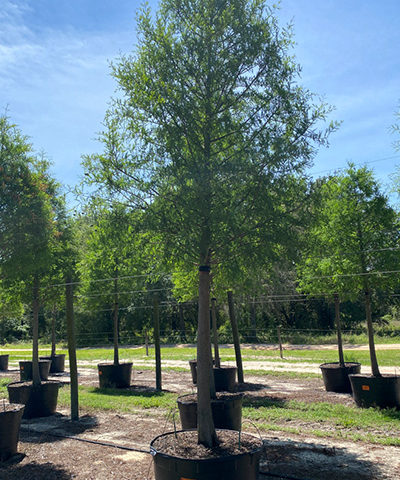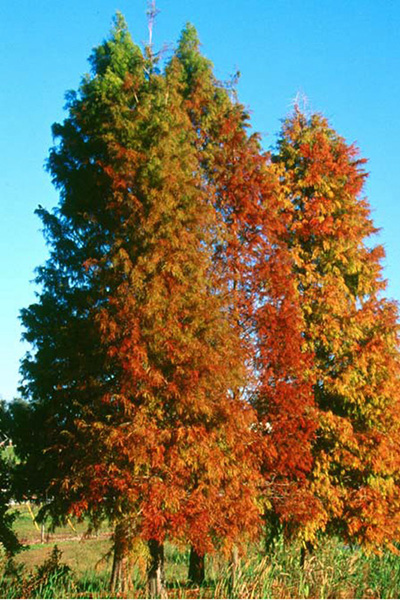Bald Cypress Seedling

Taxodium distichum
Bald Cypress is adaptable to extreme soil conditions. For example, they can adapt from wet or submerged conditions to dry and well-drained conditions. The Bald Cypress will grow faster with more fullness, vigor and overall symmetrical beauty (usually without knees) in well-drained moist soils than its native habitat of wet soils. In addition, it is adaptable to a wide range of soil pH levels up to 7.5 and it performs well in the compacted soils and restricted root space that is commonly found in most urban environment.
The Taxodium distichum species grows, for the most part, with a straight trunk that is not prone to develop double or multiple leaders. Branches are highly resistant to breakage and are usually well spaced displaying a crown of fine, textured, soft green foliage.

Ornamental Characteristics:
Native Origin:
North America
Common Names:
Bald Cypress, Southern Cypress, Swamp Cypress, Red Cypress, White Cypress, Gulf Cypress
Description:
Hardy Range: 4 to 10 Mature
Height: 50’ to 70’ Mature
Spread: 25’
Growth Rate: medium
Form: pyramidal, upright, and erect
Persistence: semi-evergreen
Ornamental Characteristics:
This Florida native has feathery, light green foliage that turns a burnt orange in autumn before defoliating. Its flowers are inconspicuous, and it bears small cones, which are attractive to wildlife. When planted in wet conditions, such as along a river or stream, the roots can form distinctive “cypress knees” – protrusions in the root that rise above the soil or water, which are thought to help bring oxygen to the roots.
Environment:
Soil: acidic; drought tolerant; loamy; moist; sandy, well drained soils; wet clay soils
Salt: medium
Exposure: full sun



